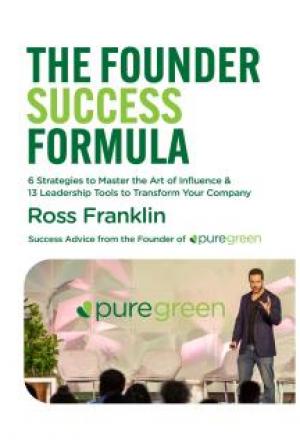ýýýýýýýý





Dreams are forever....Never loose sight of your dreams.
“Success is getting what you want. Happiness is liking what you get”
Dhapter 6 / Goal Setting to Dhange ýindset
With your new found positivity, it's time to start putting it to good use, by looking forward and setting goals that will keep you focussed and moving forward in a positive direction.
“People who plan to plan, don't plan to fail”
I remember the day I stopped setting goals, my life became stagnant, and eventually I was trapped on the downward spiral where I started to digress.
You see, my point here is, in order to maintain positivity you must achieve success regularly. Success is a bi-product of obtaining or achieving something that you want.
Everybody needs constant rewards in life, and the best way to reward yourself is by accomplishing something you want. The more you reward yourself, the more successful you become, the happier you are.
Now, that's not to say that everybody has the same interpretation of success. For me, it might be finishing a novel, and for you it might be winning gold at the Olympics...As long as your achievement has meaningful purpose to you, then, that is how you define success.
Why do we need success in our life? So we can feel good, and stay positive.
So how do you succeed on a regular basis?
I'm glad you asked!
The most productive way to consistently succeed, is to set goals. Goal setting involves establishing specific, measurable and time-targeted objectives. This method of accomplishment has featured as a major component of personal development for centuries.
When planning for success, it's best to categorise your objectives. Goal setting is best broken down into three categories:
1. Short term goals
2. Intermediate goals
3. Ultimate goals
You set short term goals to achieve your intermediate goals which work towards accomplishing your ultimate goals.
The key is to set clear definitive goals that you will achieve within a certain time frame, and not to overload yourself with too many at the one time. It is best to set five in each category.
Ok, so what constitutes a successful goal and how do I word them?
Focus on the positive in goal statements.. Compare the following phrases, and notice how the positive words convey confidence, commitment, and enthusiasm.
For example instead of “I will try" substitute the phrase “ I will “. Instead of saying “I should do “insert the phrase “I will do “. “I will” statements are very powerful positive self-statements or reminders to help you achieve goals.
Before we move to my Short Term, Intermediate and Ultimate Goal Setting Strategy here are a few variations that I find very powerful:
1. I will consume five balance nutritious meals tomorrow! - Short Term Goal
2. Within 10 weeks I will lose 10kg of body fat! - Intermediate Goal
3. Within 2 Years I will start my own business! - Ultimate Goal
Can you see how I have defined an objective, and time frame in which I will achieve each goal?
The objective forms direction and the time frame creates motivation!
Now, there's no use setting goals if you don't review them constantly. The more you re-sight your goals, the more inspired you will become to achieve them.
Setting goals to achieve an objective, is the driving force behind your motivation. If you can increase your motivation, you will want to achieve more, and achieving more makes your more successful......
Being successful will make you HAPPY!
Before we move on to my goal setting strategy, let me just summarise the key points:
Summary
• Goals form Direction – 'I will'.
• Time frames create Motivation – 'Within'.
• Achieving equals Success – 'Happiness'. Ok, time to check out my goal setting strategy and how you can incorporate that into your daily routine and create unlimited motivation:
Strategy
1. I Start with my Ultimate Goals and work back to my Short Term Goals.
2. I affirm my goals as soon as I wake up of a morning, at lunch, and before I go to bed.
3. I set my daily goals the night before when I affirm my Intermediate and Ultimate goals as this gives me inspiration.
4. I read each goal three times, every time I visit my goals. When I achieve one of my goals I simply replace it so I am always working towards five Ultimate, Intermediate, and Short Term Goals.
Ultimate Goals
1.
Within3 years I willown my own business!
2.
Within3 years I willown my own my dream car!
3.Within5 years I willhave a holiday house!
4.Within5 years I willtravel around France!
5.
Within10 years I willtransform 100,000 lives!
Intermediate Goals
1.
Within10 weeksI willloose 10kg of body fat!
2.
Within10 weeksI willlook great on the beach!
3.Within10 weeksI willfinish my business plan!
4.Within10 weeksI willsave $5000!
5.
Within10 weeksI will pass my course!
Short Term Goals
1. Tomorrow
I willeat five nutritious meals!
2. Tomorrow
I willgo for a 25min run!
3. Tomorrow
I willstart my business plan!
4. This week
I willsave $500!
5. This week
I willfinish my assignment!
Goals are just like positive affirmations....if you persist and consistently review your goals at least three times a day, you will truly increase your motivation and success.
“ It is impossible to advance in life without goals.”
Chapter A – Victory Begins with Visualisation
Throughout life, we record each and every experience in our sub-conscious mind. For the most part, we are unaware we have stored these experiences away in the filing cabinet of our mind.
At some future point, a new event will trigger the memory of an old experience. For example, a beautiful sunset may remind you of a vacation trip to Hawaii.
It is important to note, that our brain is capable of both recording and playing back memories.
Second, when we do recall a memory, it is the emotions and feelings we re-experience, not the facts and figures from the memory.
Which leads me to my next strategy – Visualisation for Victory.
Visualisation is another powerful tool that can be used to transform and strengthen the mind's ability to believe and build success.
By visualising positive imagery, you are able to change emotions to have a positive effect on your mind and body.
For me, the true power of visualisation was revealed at one of Anthony Robbins seminars where I endured the fire walk.
The ability to visualise and distract my mind from it's programmed belief, enabled me to walk barefoot across a fifteen foot track of red hot coal and come out on the other side without a burn or blister.
From the thousand people who endured the fire walk, a little over 1% were taken to hospital with third degree burns because they did not willingly accept that a positive visual and verbal belief strategy could override their traditional belief of the mind...
Quite an amazing statistic don't you think?... 10 people out of 1000!.
To give you a quick example of how we are able to produce and trigger physical changes, close your eyes for a minute and picture yourself taking a bite out of a lemon. Chances are your taste glands will salivate and react as though you have really bitten into a lemon.
Similarly, if you visualise yourself running up a steep hill putting in 110%, your heart rate should increase even though you are sitting down and relaxing. These are just two examples of how visualisation techniques can produce real physical changes in the body.
Now that you have emulated these two examples, you might be asking yourself , “Well how does biting a lemon or running up a hill have anything to do with my success?”
Well, the point I am trying to make here is that if you were able to trigger physical change through visualisation from an activity that you have physically endured in the past, why can't you trigger physical change by using mental imagery to program the mind into simulating positive results in the future?
The answer, you can!.
Today, athletes all over the world are using visualisation techniques to picture success in their chosen sport, months, even years out from a specific event. By the time the event comes around, they have already competed and rehearsed their success 100 – 1000 times before in their mind.
The result...extreme confidence and self belief. By building and strengthening these two qualities you limit the impact of negative emotion such as nervousness for example.
You see, negative emotions consume energy, and in such an important event, energy is vital. Visualisation prepares you for these emotional fluctuations by overriding doubt with what could happen, with what you believe will happen.
How does it work?
Visualisation encourages activity in the right side of your brain, related to creativity and emotions. It leaves you free to focus on overcoming a fear, achieving insights about an emotional anxiety or focusing on a particular goal you want to pursue.
As the imaginary visual experience continues, your blood pressure and heart rate may fall, even breathing brings new energy and vitality into the body. While the mind is busily delving into unexplored realms, the body is in healing mode. ((
Visualisation techniques have been used to cure phobias, lower blood pressure, turn average athletes into good ones and improve the good ones even more. In fact, research shows that visualising yourself making the perfect golf swing or delivering the perfect tennis volley actually increases your ability to do just that! ((
The popularity of visualisation is increasing everyday and has become a proven personal development and healing tool for the following:
1. Stress and pain relief.
2. Motivation and personal development.
3. Allergies and immune system disorders.
4. Cancer (as a complementary therapy). Before I give you the exact same visualisation strategy I use on a daily basis, let me point out the key ingredients to a successful mental imagery session:
Objective:
To be successful in anything, you must first define a goal. A goal is an objective you would like to accomplish within a given time frame and may include anything that you want to succeed at. Here are a few examples:
• Winning the 100m sprint at your athletics carnival.
• Nailing the perfect public speaking presentation.
• Winning the grand final in your chosen sport.
• Securing a promotion or your dream job.
• Getting into optimal physical shape within a certain time frame.
• Finishing your first novel.
:nvironment:
In order to get the most out of a visualisation session, you need to find a place that is going to relieve you from any external distractions and promote an environment that works for you. As we are all different, such environments may include:
• Lying on your bed in total silence.
• Sitting or lying down in total darkness.
• Outside, at your favourite park or beach.
• Sitting or lying down with your appropriate background music.
• Relaxing in the bath.
Relaxation: Relaxation is the key to any successful visualisation.
You must be able to put yourself into a state, where ultimately, you eliminate all external
distractions and thoughts in your mind. This will take time to master so be patient. The most
effective way to achieve total relaxation is to close your eyes and concentrate on slow deep
breathing. This is known as centering. Centering:means not allowing your inner thoughts to be
overshadowed by stressful circumstances or negative thoughts and emotions.When cente red for
relaxation you must:
• Close your eyes to eliminate all visual distractions.
• Block out all surrounding noise.
• Focus on slow deep breathing.
• Lower your heart rate.
• Release any stress or tension.
• Centeryour mind.
Virtual World:
Now that you have centered, it's time to create your Virtual World. Your Virtual World is an
imaginary place that you create, where you can go to escape from the real world. This is your
world away from the world. The reason why this is so effective is because by creating the perfect
escape in your mind, you can visit this place for total inner peace at anytime. It is also a very
effective way to put you in the perfect state for visualisation. Think of it this way. If you could design
a perfect place for you to relax, where would it be, and what would it look like? There are no
limitations...it might be a waterfall or a secluded beach or even a forest. Everything at this place is
designed for your total relaxation. The more times you visit yourVirtual World, the clearer it will
become, to the point where eventually you will be able to escape from the real world within
seconds. YourVirtual Worldshould evoke as many senses as possible for example:
• Smell
• Sound
• Touch
• Sight
• Taste
Dlarity: When, and only when you have mastered relaxation and the ability to create your Virtual
World, will you begin to visualise with crystal clear clarity. Visualisation is similar to digital
photography, the more photos you take, the higher quality images you produce. Mental imagery is
no different, the more you visualise, the clearer your imagery becomes. At first you may find your
images a little fuzzy or static, however, with practice and persistence, I guarantee you they will
start to become sharp and reflect intricate detail. As the clarity of your imagery improves through
repetition, you will find the duration of you visualisation increasing. This will be a true indication that
the mental stimulation from your visualisation sessions is increasing, which in turn reflects greater
self confidence by becoming more comfortable with seeing yourself succeed. Optimal clarity is
achieved through repetition and rehearsal and is a reflection of the following:
• Visual resolution and definition.
• Sound and noise quality.
• Touch and feel.
• Smell and scent.
Emotion:
The more positive emotion you can generate in a visualisation session, the more likely you are to succeed on the day of your chosen event, as it are these positive emotions that will override the negative ones. In order to capture the feeling of a positive emotion, think back to a time when you were successful at something, and the feeling you had from that success. Such examples may include: getting an 'A+' in a maths exam, winning the hundred metre sprint, receiving a complement from someone you admire, getting your first bike or even getting married. This was the warm fuzzy feeling you got when you had achieved something that was special or of significant importance to you. These are the feelings (positive emotions) that must transpire from accomplishment in your visualisation. The more positive emotions we can generate from a single imagery session, the more productive the outcome! Positive emotions are triggered by achievement and accomplishment and reflect the following:
• Confidence
• Love
• Strength
• Joy
• Ecstasy
Duration:
Initially, duration will be a true reflection of clarity. Your ability to visualise with clarity, will
have a major impact on the duration of your visualisation sessions. Losing clarity is a true reflection
of distraction, and in this case, it will most likely be your own thoughts that will distract you.
Practise makes perfect, so be committed and persistent. As you become more experienced, your
mental imagery will become more comfortable. Your ultimate goal is to visualise the whole event
that you want success in, from start to finish, and feel every positive emotion possible. In order to
prepare yourself for an event, you want to replicate all variables leading up to it, therefore, the
more detail and events you can visualise leading up to your event, the more prepared you will be.
The greater your preparation, the greater your chance for success. Your visualisation session
should not be governed by time, but instead, intricate detail. Include the following:
• How you will feel when you wake up in the morning (confident).
• What you will eat prior to your event (taste).
• How you will feel prior to your event (strength).
• How you will feel during your event (confident).
• How you will feel after you succeed at your event (joy, ecstasy).
Repetition:
Anybody can acquire knowledge, it's how you use it that sets people apart. Throughout this book, I continually use the word repetition. Repetition is the key to mastery. Take learning to riding a bike for example: very few of us are able to jump straight on a bike and master it, and so we fall off, we get back on, we fall off again, we get back on again, until finally we perfect the art of riding a bike. Visualisation is no different, once you master the art, it's a matter of repetition. Once you succeed at your desired event, it's time to create a new vision for success, and replicate your visualisation strategy around your new goal. The main keys to repetition are:
• Define your visualisation objective.
• Implement your visualisation strategy.
• Repeat this strategy daily.
• Achieve your objective.
• Repeat this process.
You should by now have a solid foundation to build a positive visualisation session, so let's build on that and take a look at the exact same strategy I use:
.trategy
1. Objective
ÏI will be best on court in my basketball grand final.
2. Environment
Ï I prefer to lie on my bed on my back in complete darkness and make sure there are no noise distractions. I don't use any form of background music.
3. Relaxation
ÏI take 20 really deep breaths and focus on centering my breathing and releasing my inner thoughts with my eyes shut.
4. My Virtual World
Ï I then enter my Virtual World where I spend 1-2 minutes in my body sculpted rock pool. I try to promote as many positive emotions as I can: from the clarity of the landscape to the temperature of the water, form the feel of the water to the sound of the birds and running water.
Ï In my Virtual World I can create any mood and promote any emotion that I need to obtain optimal inner focus where I am totally excluded from the real world.
Ï I have now put myself in a state of total centered relaxation and am ready to visualise my success with Intricate clarity.
5. My Visual Success
Ï I start by visualising waking up on the day of my big event. I feel the positive emotions that transpire from my extreme confidence and energy as I start the day.
Ï I then visualise sitting down to breakfast where I can taste my favourite foods while I affirm my success in the grand final.
Ï I picture myself being extremely confident around my friends and family as they encourage and congratulate me on my achievement.
Ï I then move forward to my pre-game shoot around where I visualise making every shot. I feel the strength and confidence as I shoot around and handle the ball.
Ï I visualise sitting down to my pre-game meal, I can taste my favourite pasta and feel the inner confidence as game time nears.
Ï I picture myself arriving at the stadium and walking through the doors to greet my team mates. I can smell the stadium and hear the crowd.
ÏAs I suit up, I can feel the positive energy and excitement in the change rooms as we go over our game plan.
Ï It's time to warm up before the main event and I feel extremely confident, agile and quick. I visualise the crowd and atmosphere.
Ï It's game time, I visualise the first, second, third and forth quarters making my shots, stealing the ball, grabbing rebounds, giving assists, running the offences and totally dominating my opponent.
Ï It's the final quarter we are down by a point with 10 seconds to go, I can feel the sweat running down my forehead, the crowd has gone silent, I have the ball, I make my move, shoot...score, nothing but net, WE WIN BY A POINT!
Ï My team mates are ecstatic. They all jump on me, we have done it, we have won the grand final. I can feel all of the emotions of jubilation from my success.
ÏI visualise myself receiving my medal and receiving the MVP of the game award.
ÏI picture the team in the change room as we sing the club song around family and friends.
ÏI have succeeded...I take a couple of deep breaths and open my eyes slowly.
ÏMy session is complete!
6. DurationÏThis is a typical visualisation session for me which would last between 20 – 40 minutes.
7. Repetition
Ï For a grand final I would carry out 5-7 visualisation sessions prior to the event. This is because you are never assured a birth In a grand final. Visualisation for basketball is a game by game for me, as the venue and opposition are forever changing.
ÏThe greater the importance of my event the more sessions I will carry out.
ÏThe more variables of an event I can visualise, the greater chance I have for success.
ÏThe more repetitive I am, the more confident I feel on the day.
The true power of the human mind is unlimited. If you visualise to succeed, you will achieve. Positive imagery generates positive results. The more you visualise success in the future, the more confident you will be able to accomplish it.
Remember one thing, Victory Begins with Visualisation!
Dhapter 7 – ýy Positive Persona
"Now I understand the secret of correcting the attitude of others and that is to correct my own."
Before we journey on to your Positive Persona, let's build the foundation with the:
Ten Dommandments for living with people
1. Speak to people – Nothing is so nice as a cheerful greeting.
2. Smile at people – It takes 72 muscles to frown, only 14 to smile.
3. Dall people by name – The sweetest sound is ones own name.
4. Be friendly and helpful – If you want friends, be a friend.
5. Be cordial – Speak and act in such a way as to demonstrate that everything you do is a genuine pleasure.
6. Be genuinely interested in people – Just try and you can like almost everyone.
7. Be gener








 Dreams are forever....Never loose sight of your dreams.
Dreams are forever....Never loose sight of your dreams.


